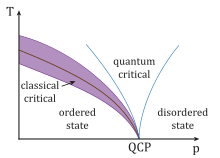
Crystallography

Crystallography is the experimental science of determining the arrangement of atoms in crystalline solids (see crystal structure). The word 'crystallography' derives from the Greek words crystallon 'cold drop, frozen drop', with its meaning extending to all solids with some degree of transparency, and graphein 'to write'. In July 2012, the United Nations recognised the importance of the science of crystallography by proclaiming that 2014 would be the International Year of Crystallography. X-ray crystallography is used to determine the structure of large biomolecules such as proteins. Before the development of X-ray diffraction crystallography (see below), the study of crystals was based on physical measurements of their geometry. This involved measuring the angles of crystal faces relative to each other and to theoretical reference axes (crystallographic axes), and establishing the symmetry of the crystal in question. This physical measurement is carried out using a goniometer. The position in 3D space of each crystal face is plotted on a stereographic net such as a Wulff net or Lambert net. The pole to each face is plotted on the net. Each point is labelled with its Miller index. The final plot allows the symmetry of the crystal to be established. Crystallography is the experimental science of determining the arrangement of atoms in crystalline solids (see crystal structure). The word 'crystallography' derives from the Greek words crystallon 'cold drop, frozen drop', with its meaning extending to all solids with some degree of transparency, and graphein 'to write'. In July 2012, the United Nations recognised the importance of the science of crystallography by proclaiming that 2014 would be the International Year of Crystallography. X-ray crystallography is used to determine the structure of large biomolecules such as proteins. Before the development of X-ray diffraction crystallography (see below), the study of crystals was based on physical measurements of their geometry. This involved measuring the angles of crystal faces relative to each other and to theoretical reference axes (crystallographic axes), and establishing the symmetry of the crystal in question. This physical measurement is carried out using a goniometer. The position in 3D space of each crystal face is plotted on a stereographic net such as a Wulff net or Lambert net. The pole to each face is plotted on the net. Each point is labelled with its Miller index. The final plot allows the symmetry of the crystal to be established. Crystallographic methods now depend on analysis of the diffraction patterns of a sample targeted by a beam of some type. X-rays are most commonly used; other beams used include electrons or neutrons. This is facilitated by the wave properties of the particles. Crystallographers often explicitly state the type of beam used, as in the terms X-ray crystallography, neutron diffraction and electron diffraction. These three types of radiation interact with the specimen in different ways.
